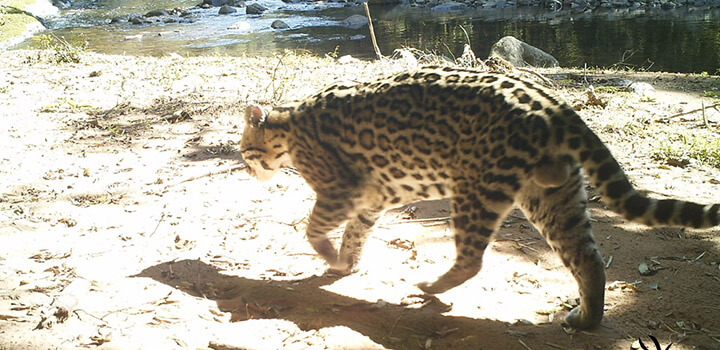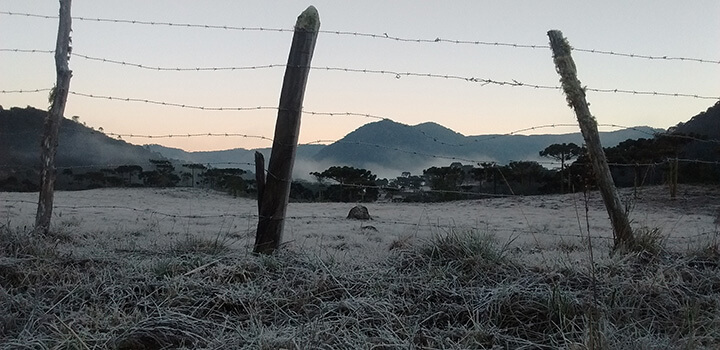Centuries of human activity in Brazil’s Atlantic Forest have cut its local mammal populations in half since the 1500s.
This was the conclusion of a team of researchers from Brazil’s Universidade Federal de Santa Catarina and the UK’s University of East Anglia, whose paper is published in the journal PLoS ONE.
Although the forest is still one of the most biodiverse ecosystems on the planet, the study shows that a variety of human activities, including hunting and deforestation, have had a devastating effect on its mammal populations.
The researchers compared data of mammalian assemblages — groups of species that live and coexist within the same ecosystem — from the past 30 years to an estimation of historical occurrences going back to Brazil’s colonial era. This historical baseline was based on known geographic range polygons obtained from the International Union for Conservation of Nature (IUCN).
In total, they observed species loss among almost 500 medium- and large-bodied mammal species.
The research reveals high rates of defaunation throughout the forest and identifies the mammal populations that have suffered most significantly due to human activities.
The study shows that apex predators, large carnivores and large-bodied herbivores are among the groups that have seen the most significant population declines.

A variety of coordinating factors have made it challenging for these species to thrive.
“These groups of species have several ecological traits that increase their vulnerability,” said Juliano Bogoni, currently a postdoctoral researcher at the University of São Paulo in Brazil and the study’s first author.
“This issue is induced by a combination of several factors, such as low population density, slow life histories, delayed weaning age, and large body size. Moreover, these species are the main target of hunting and need large forest areas to thrive.”
The destruction of large swaths of the Atlantic Forest is one of the driving factors behind the declines of mammal populations.
The Atlantic Forest, which once stretched over 1.1 million square kilometers, now covers a mere 0.143 million square kilometers, a little over one-tenth of its original size.

This habitat loss has primarily been a consequence of destructive activities by humans, many of which have persisted for centuries. These activities include everything from farming to logging to forest fires.
“These habitats are now often severely incomplete, restricted to sufficiently large forest remnants, and trapped in an open-ended extinction vortex,” Bogoni said in a statement. “This collapse is unprecedented in both history and prehistory and can be directly attributed to human activity.”
Bogoni noted that the decline of these mammal populations can have significant ripple effects throughout the rest of the ecosystem that affect not only animal populations but also human populations that rely on the rainforest.
The ecosystem, he said, provides critical natural resources such as food, water, and wood. It also serves important regulatory functions, including climate buffering, disease regulation and water purification. The forest even has an important cultural and economic function as a destination for ecotourism and as an educational resource.
As a result, habitat and species protection should be considered a priority, not only to protect animal species, but also to help the surrounding human populations thrive.
“Our results highlight the urgent need for action in protecting these fragile ecosystems,” co-author Carlos Peres, a professor of environmental sciences at the University of East Anglia, said in a statement.
“In particular, we need to carry out more comprehensive regional scale studies to understand the local patterns and drivers of species loss.
“Efforts to protect the Atlantic Forest and other tropical forest ecosystems often rests on uncooperative political will and robust public policies, so we need compelling data to drive change.”
Surely, this study plays an important role in spreading awareness of the devastation of the Atlantic Forest ecosystem by highlighting the extensive damage already caused.
The next step is political action and regulation, which could come in a variety of effective forms.
Bogoni suggested passing regulations that decrease hunting via effectiveness surveillance, designating protected areas, and incentivizing the maintenance of large privately-owned fragments of the forest.
“Even in this scenario, there are many areas that still merit attention,” he said.
“In addition, the efforts could also turn to recovery from part of all this devastation. It’s a unique forest with unique species with the largest latitudinal gradient in the world and deserves respect, attention, and effort even under these alarming conditions.”



